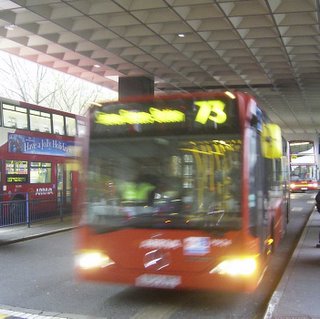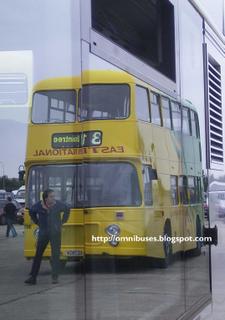
Instantly recognisable.
How many times have red London double deck
Routemasters been used in movies to let audiences know that the film’s in London? Take the Ipcress File of 1965. As Michael Caine escapes from his stark Albanian prison, what’s the first scene that tells him and his shocked audience that he wasn’t in Tirana after all, but London? Yup, a London double deck, like one of the last on Service 159, above.
A lesser London icon of TV and film is the black London cab. In this shot, it’s not the sixties designed TX4 variant but a modern, faithful, sharper TX1, but instantly recognisable all the same.
Since the Routemaster can no longer legitimately be used by contemporary motion picture producers, they need to find other means. Have you noticed how the London Eye now commonly fulfills this role? It’s transport, but of a very different kind.
It’s unusual to see all three captured together. It’ll be rarer still in the future.
Why not visit our main blog:
omnibuses.blogspot.com
 Attractive bus backs now feature quite widely on Britain's buses. Operators have seized the opportunity to use blank rears artfully to highlight their own products. The use of 'real' people is a modification of Brighton & Hove's successful bus side "I'm on the Bus" campaigns.
Attractive bus backs now feature quite widely on Britain's buses. Operators have seized the opportunity to use blank rears artfully to highlight their own products. The use of 'real' people is a modification of Brighton & Hove's successful bus side "I'm on the Bus" campaigns. 





